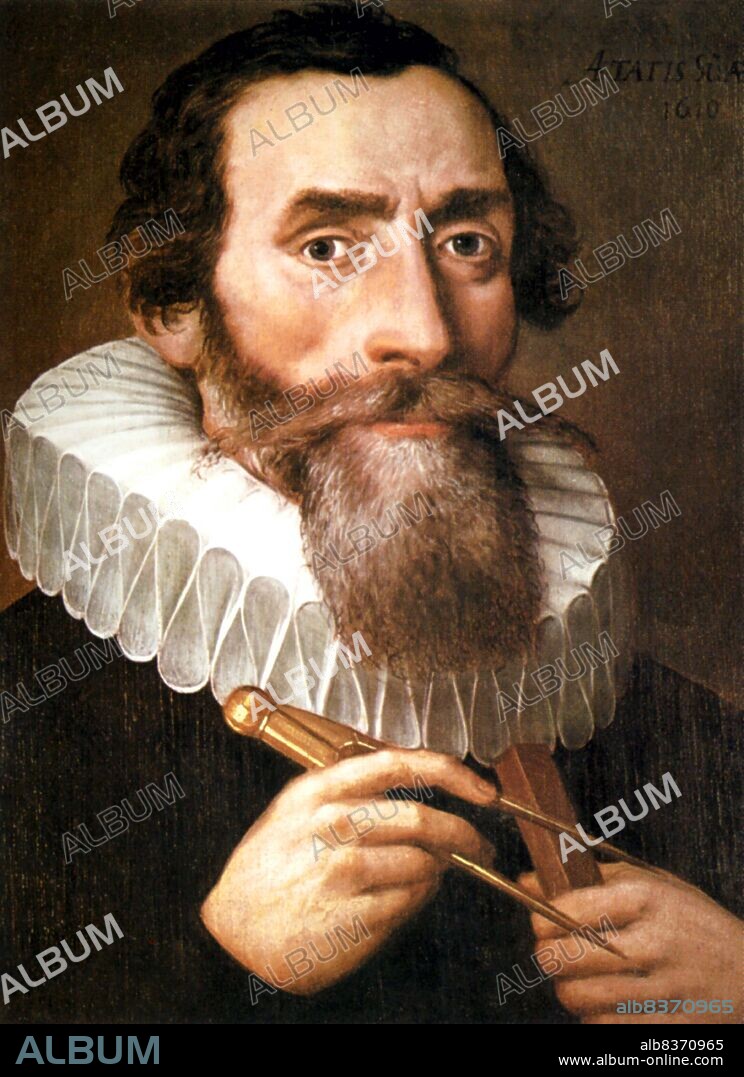alb8370965
Germany: Johannes Kepler (1571-1630), German mathematician, astronomer and astrologer, oil on panel, anon.,1610

|
Ajouter à une autre Lightbox |
|
Ajouter à une autre Lightbox |



Avez-vous déjà un compte? S'identifier
Vous n'avez pas de compte ? S'inscrire
Acheter cette image

Titre:
Germany: Johannes Kepler (1571-1630), German mathematician, astronomer and astrologer, oil on panel, anon.,1610
Légende:
Voir la traduction automatique
Johannes Kepler (December 27, 1571 November 15, 1630) was a German mathematician, astronomer, and astrologer. A key figure in the 17th century scientific revolution, he is best known for his laws of planetary motion, based on his works Astronomia nova, Harmonices Mundi, and Epitome of Copernican Astronomy. These works also provided one of the foundations for Isaac Newton's theory of universal gravitation.
. During his career, Kepler was a mathematics teacher at a seminary school in Graz, Austria, where he became an associate of Prince Hans Ulrich von Eggenberg. Later he became an assistant to astronomer Tycho Brahe, and eventually the imperial mathematician to Emperor Rudolf II and his two successors Matthias and Ferdinand II. He was also a mathematics teacher in Linz, Austria, and an adviser to General Wallenstein. Additionally, he did fundamental work in the field of optics, invented an improved version of the refracting telescope (the Keplerian Telescope), and mentioned the telescopic discoveries of his contemporary Galileo Galilei.
. During his career, Kepler was a mathematics teacher at a seminary school in Graz, Austria, where he became an associate of Prince Hans Ulrich von Eggenberg. Later he became an assistant to astronomer Tycho Brahe, and eventually the imperial mathematician to Emperor Rudolf II and his two successors Matthias and Ferdinand II. He was also a mathematics teacher in Linz, Austria, and an adviser to General Wallenstein. Additionally, he did fundamental work in the field of optics, invented an improved version of the refracting telescope (the Keplerian Telescope), and mentioned the telescopic discoveries of his contemporary Galileo Galilei.
Crédit:
Album / Universal Images Group / Pictures From History
Autorisations:
Modèle: Non - Propriété: Non
Questions sur les droits?
Questions sur les droits?
Taille de l'image:
3582 x 4928 px | 50.5 MB
Taille d'impression:
30.3 x 41.7 cm | 11.9 x 16.4 in (300 dpi)
Mots clés:
ALLEMAGNE • ALLEMAND • ALLEMANDE • ART (CATÉGORIE) • ART • ART, PEINTURE • ASTROLOGIE • ASTROLOGUE • ASTRONOMIE • HOMME DE SCIENCE • KEPLER, JOHANNES • MATHEMATICIEN • MATHÉMATIQUE • MATHEMATIQUES • PEINTURE • SAVANT • SCIENCE • SCIENCE: ASTROLOGIE • SCIENCE: ASTRONOMIE • SCIENCE: MATHEMATIQUE • SCIENCES • SCIENTIFIQUE • TABLEAU • TABLEAUX • ZODIAQUE, ASTROLOGIE
 Pinterest
Pinterest Twitter
Twitter Facebook
Facebook Copier le lien
Copier le lien Email
Email
